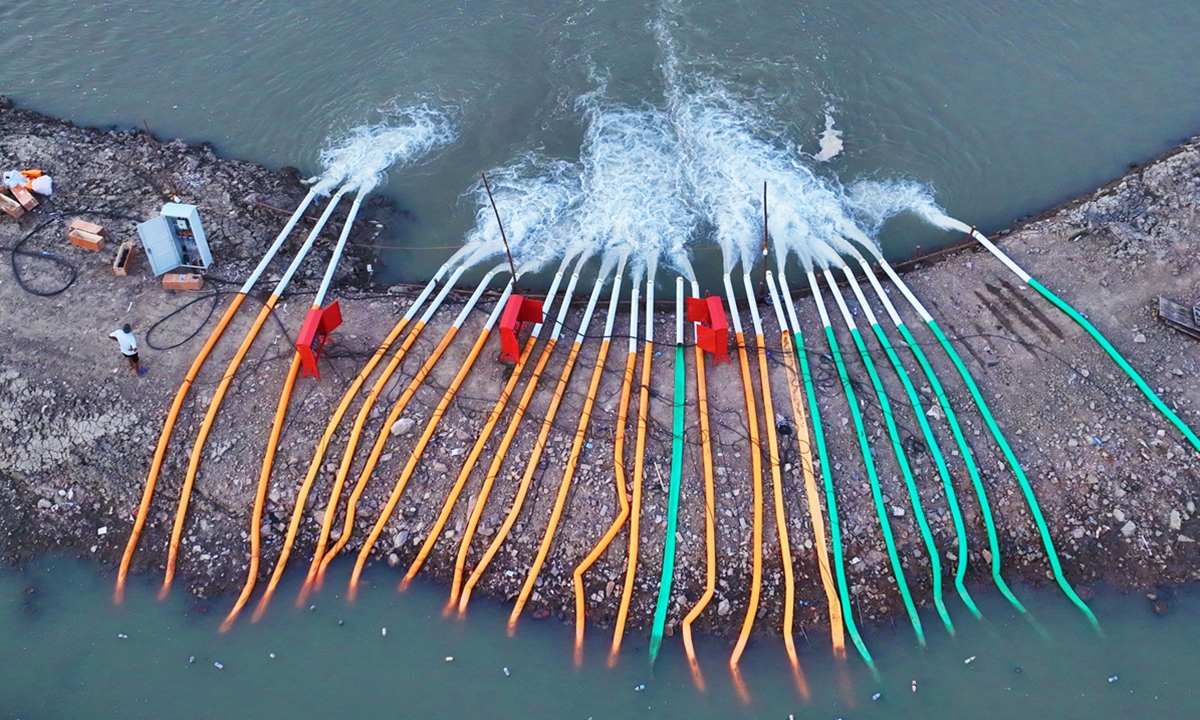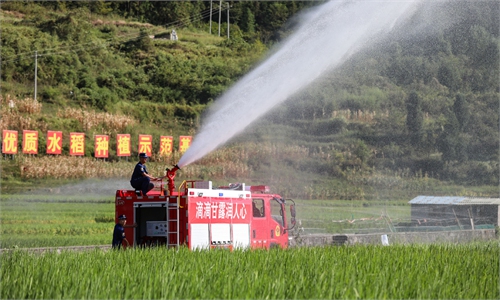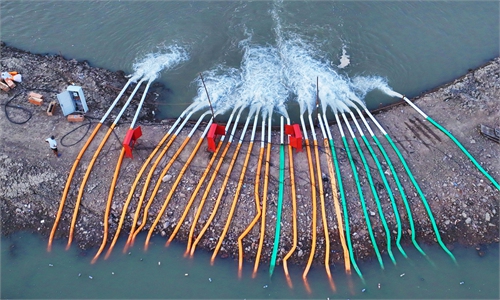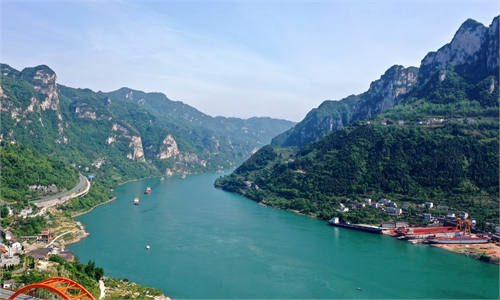Red alert for high temperature issued for 10th consecutive day; water supply for 2.46m people affected

Water has been pumped from a canal to a waterway to ease the drought and ensure the harvest since August 18, 2022 in Ma'anshan, East China's Anhui Province as Chinese provinces and regions are battling prolonged heat waves. Photo: VCG
China's Central Meteorological Center (CMC) issued more red alerts for high temperatures on Sunday, the 10th consecutive day it has issued the red alert. Also, the drought is expected to continue in the Yangtze River valley in the coming days, according to China's Ministry of Water Resources.
On Sunday, at least 17 Chinese provinces and regions, including Gansu Province in Northwest China, Central China's Henan Province, eastern and northern Guizhou Province in Southwest China, and northern Guangdong Province in South China are predicted to see temperatures run as high as 35 to 39 C.
Among the above regions, the highest temperatures are likely to hit southern Shaanxi, eastern Sichuan, Chongqing, Hubei, north-central Hunan, south-eastern Anhui, north-western Jiangxi and south-central Zhejiang where temperatures may reach more than 40 C, CMC said.
According to the China Meteorological Administration on Sunday, the high temperature will gradually ease, starting from August 26.
Since July, most parts of the Yangtze River Basin have sustained high temperatures and severe drought, with rainfalls dropping 4.5 percent less than the same period the year. The drought is expected to continue in the Yangtze River valley in the coming days, said the Ministry of Water Resources.
The ministry stated that since the beginning of 2022, under the influence of Western Pacific subtropical high pressure trough, the water levels of the local river system in the Yangtze River valley has dropped significantly, a dire situation unseen in many years.
So far, 32.99 million mu (21,993.3 square kilometers) of arable land has been affected by drought in nine provinces and municipalities including Sichuan, Chongqing, Hubei, Hunan, Anhui and Jiangxi, and water supply for 2.46 million people and 350,000 livestock has been affected, China's state broadcaster CCTV reported on Sunday.
Southwest China's Sichuan has initiated a top emergency response to ensure energy supply, which was the first time Sichuan has launched the highest-level emergency response since the provincial government issued an emergency plan to cope with electricity shortage, local media reported on Sunday.
In Sichuan, due to lingering high temperatures and low precipitations, the water flow of the local river system in Leshan, Sichuan sharply went down, with the "whole body" of the renowned Leshan Giant Buddha fully reappearing, attracting many tourists to visit.
Also, as the water levels hit 157-year low, the Guanyin Pavilion in Ezhou, Central China's Hubei Province, which has stood on the Yangtze River for more than 700 years, has also reappeared from underwater.
Yang Guang, director of the department of flood and drought prevention and control under the Ministry of Water Resources, said that due to advanced planning, reservoirs has restored sufficient water, which will be diverted to alleviate local water shortage and drought relief, according to the CCTV report.
As the current autumn grain crops such as rice are in growth stage that need more water to irrigate, since August 16, the Ministry of Water Resources began to implement a special campaign to dispatch a total of 980 million cubic meters of water downstream from the giant Three Gorges Reservoir in the upper reaches of the Yangtze River, Dongting Lake reservoir and Poyang Lake reservoir.
Hu Jianwei, chief hydrological forecaster of the Ministry of Water Resources, said that it is expected that the precipitation and water inflow in the Yangtze River valley will remain low and the drought will continue, reported the CCTV.
Later, with the arrival of autumn rain in western China, the drought situation in the upper reaches of the Yangtze River will ease, Hu said.



